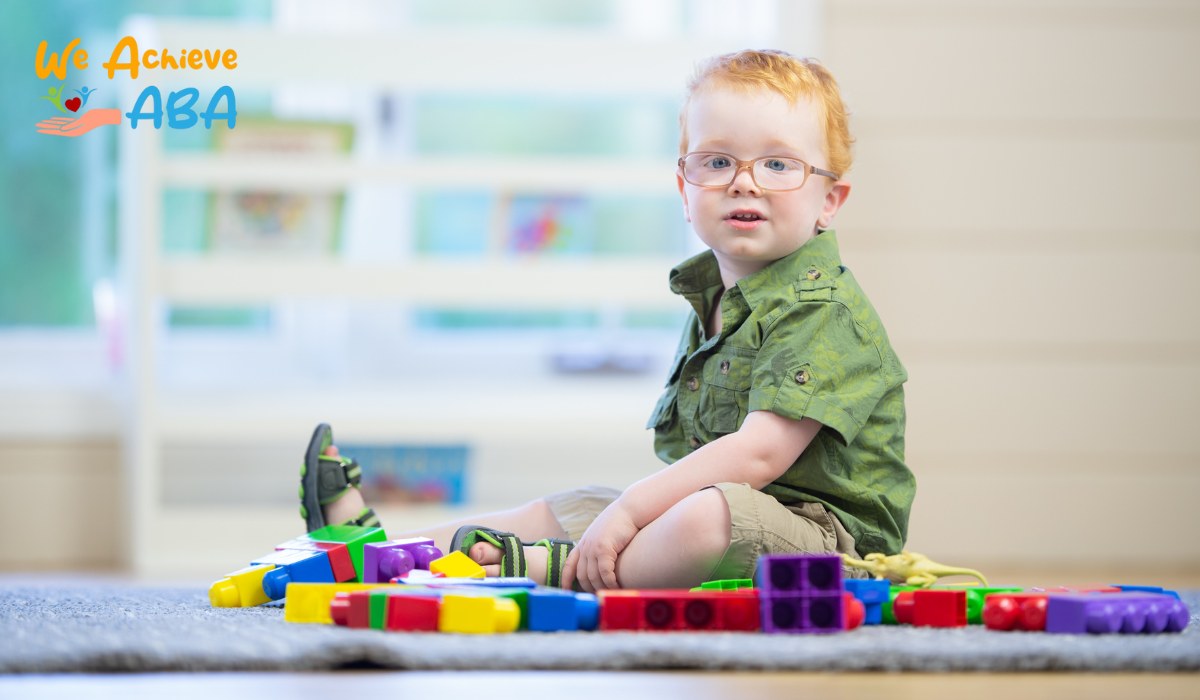Early Autism Indicators: What to Watch for in Babies
Discover early autism indicators in babies. Spot developmental signs and know when to seek guidance for timely support and intervention.
Key Points:
- Early autism signs often appear in subtle differences in eye contact, social interaction, and sensory responses before age two.
- Recognizing these indicators helps parents seek timely evaluation and intervention, improving long-term developmental outcomes.
- Evidence-based supports like ABA therapy can strengthen early communication, connection, and daily living skills.
When your baby grows, every coo, giggle, and glance feels like a milestone. But what happens when something feels a little different—when your child doesn’t respond to your voice, avoids eye contact, or doesn’t point or babble as expected? These early moments can raise questions that no parent should face alone.
Autism spectrum disorder (ASD) is a neurodevelopmental condition that affects how children communicate, play, and relate to others. While every child develops at their own pace, certain early signs can suggest a need for closer observation. The earlier autism is recognized, the sooner intervention can begin—and early support can make a life-changing difference.
Below, we’ll break down what early autism indicators can look like in babies, what parents can do to track development, and when to seek professional guidance.
Understanding Early Autism Indicators
Autism doesn’t have a single defining symptom—it shows up as a pattern of differences in communication, play, and sensory engagement. These differences often appear before the age of two, but some can be seen as early as six months.
Unlike milestones like walking or talking, autism-related signs are about how your baby connects with the world. It’s not just about missing skills, but about the quality and consistency of interactions—how your child uses their eyes, gestures, or responses to share attention with others.

Early Social and Communication Signs
Babies communicate long before they speak. Through smiles, babbles, and gestures, they show interest and connection. When these natural exchanges are limited or absent, it may be an early sign of autism.
Common early signs to watch for:
- Limited Eye Contact: Most babies make frequent eye contact during feeding, play, or when hearing their name. A baby who rarely seeks eye contact or looks away quickly might be showing early social processing differences.
- Lack of Response to Name: By around 6–9 months, babies typically turn when called. If your child doesn’t consistently respond—even when there are no hearing issues—it may be worth noting.
- Few Social Smiles: Smiling back when you smile is one of the first ways babies connect. A lack of reciprocal smiling can be a red flag for delayed social reciprocity.
- Reduced Babbling or Gesturing: Typical development involves coos, “ba-ba” sounds, and pointing to share interest. Delays in these pre-speech milestones often precede speech delays associated with autism.
- Difficulty with Joint Attention: Joint attention—sharing focus on an object or event—is foundational for communication. A child who doesn’t follow your gaze or point to share interest may be missing this early building block.
Behavioral and Sensory Indicators
Alongside social and communication differences, babies on the autism spectrum may show unique sensory and movement patterns. These signs often emerge gradually, making them easier to miss unless observed closely.
Patterns to look for:
- Unusual Reactions to Sounds or Textures: Some babies may startle easily at everyday noises or seem unaware of loud sounds. Others might dislike certain fabrics or resist being touched.
- Repetitive Movements: Hand-flapping, rocking, or spinning objects repetitively can appear soothing for some children with autism. These repetitive behaviors often help them regulate sensory input.
- Strong Focus on Objects Over People: Babies typically prefer faces and voices. If your child spends more time fixated on spinning wheels or lights than interacting with people, this may indicate sensory-based engagement differences.
- Delayed or Atypical Motor Skills: Some babies on the spectrum might develop motor skills earlier or later than usual, or move in repetitive patterns that differ from typical exploration.
Developmental Milestones to Track
Monitoring your baby’s development helps you spot early patterns that may suggest autism. Every child grows at their own pace, but consistent gaps in communication, play, or social engagement can be meaningful indicators.
Here’s a quick developmental snapshot to guide you:
- 6 months: Babies usually smile, respond to sounds, and make eye contact. A lack of smiles or social response may signal concern.
- 9 months: Most turn toward their name and share sounds or facial expressions. Not responding or vocalizing could be an early red flag.
- 12 months: Typical milestones include pointing or imitating gestures. Not waving, pointing, or using gestures may suggest a delay.
- 18 months: Children often use single words and engage in simple pretend play. Limited words or play skills might indicate developmental differences.
- 24 months: Combining words and imitating actions are expected by this stage. Not using two-word phrases or showing interest in peers can warrant attention.
If your child consistently misses milestones across several areas, it’s a good idea to discuss your observations with a pediatrician or request a developmental screening for clarity and early support.
Why Early Detection Matters
Early detection doesn’t just identify challenges—it opens doors to learning and progress. The brain is most adaptable in the first few years of life, making early therapy highly effective.
Children who receive early intervention, including Applied Behavior Analysis (ABA) therapy, often show improvements in communication, play, and daily living skills. Early support helps reduce frustration, strengthen family relationships, and set the stage for independence later in life.

Practical Steps Parents Can Take at Home
Even before formal therapy begins, there are simple ways parents can support their baby’s development. These small, consistent efforts nurture social awareness and communication naturally.
Everyday strategies to encourage connection:
1. Encourage Eye Contact During Daily Routines
Make face-to-face moments part of every day—during feeding, diaper changes, or play. Smile, use expressive facial cues, and wait for your baby to look at you before responding.
2. Narrate and Imitate
Describe what’s happening as you move through routines: “Bath time! Warm water!” Babies learn language through repetition and tone. Imitate their coos or gestures—it teaches them that communication is two-way.
3. Create Turn-Taking Games
Games like peek-a-boo or rolling a ball back and forth build anticipation and social exchange. These simple interactions strengthen early social reciprocity.
4. Use Visual and Sensory Play
Offer toys with different textures, lights, or sounds, but observe your child’s reactions. Gentle exposure helps identify sensory preferences while avoiding overstimulation.
5. Praise Attempts to Communicate
Even small efforts—a reach, a sound, or a glance—are communication. Respond warmly to show your baby their efforts matter.
When to Seek Professional Guidance
Parents often ask, “How early can autism be diagnosed?” While some signs appear before 12 months, most formal diagnoses occur between 18 and 24 months. Still, you don’t need to wait for a diagnosis to seek help.
When to Consider an Evaluation
You should consider professional assessment if your baby:
- Don't babble or gesture for 12 months.
- Haven’t said a single word in 18 months.
- Doesn’t respond to their name or familiar voices.
- Loses words or social skills they once had.
- Rarely seeks comfort or interaction.
Early intervention services, including ABA therapy, are most effective when started as soon as possible. Pediatricians can provide developmental screenings or referrals to specialists such as developmental psychologists or Board Certified Behavior Analysts (BCBAs).

How ABA Therapy Supports Early Development
ABA therapy focuses on understanding how behavior works and using positive reinforcement to encourage meaningful skills. For babies and toddlers showing early autism signs, ABA programs emphasize foundational areas like communication, imitation, and play.
Core areas of early intervention ABA:
- Joint Attention: Helping your child share focus on people or objects.
- Imitation: Encouraging your child to copy simple gestures or actions.
- Requesting: Teaching ways to ask for what they want using sounds, signs, or pictures.
- Play Skills: Expanding how your child interacts with toys and peers.
- Emotional Regulation: Supporting smoother transitions and fewer meltdowns.
Supporting Your Child’s Journey
Recognizing early autism indicators can be emotional—but it’s also empowering. Every observation helps you better understand your child’s needs and opens pathways to meaningful progress.
If your baby shows signs of developmental differences, early support is the key. Evidence-based therapy like ABA can help build communication, social engagement, and adaptive skills that make everyday life smoother for both children and families.
We Achieve ABA offers compassionate, individualized ABA therapy in Texas, North Carolina, and Illinois, guiding families toward measurable progress and lasting confidence.
If you’re ready to learn how personalized ABA therapy can help your child grow and connect, contact us today. Early action can make all the difference in helping your child thrive.
More Resources
Expert Clinicians
Our Team at We Achieve ABA consists of highly trained, licensed, and insured professionals who are not only knowledgeable in autism care but also compassionate, culturally sansitive, and reliably dpendable.

